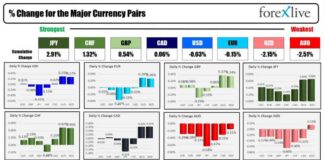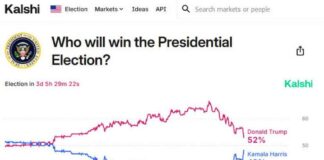USD Weakens as Powell Pledges Support for Jobs
Federal Reserve Chair Jerome Powell’s speech at the Jackson Hole Symposium sent shockwaves through the markets as he made it clear that the time has come for policy to adjust in order to support a strong labor market. Powell’s pledge to do everything possible to achieve this goal has led to a weakening of the US dollar as investors digest the implications of potential rate cuts and a renewed focus on employment.
Powell’s Bold Statements
During his speech, Powell not only hinted at a rate cut but explicitly stated that the Fed is prepared to take action to support the labor market. This departure from the traditional language of moving gradually signals a more aggressive approach to monetary policy, with the potential for a 50 basis point cut in the near future. The market reaction was swift and strong, with the US dollar falling sharply against other major currencies.
Powell’s commitment to supporting job growth comes at a critical time for the US economy, as concerns about a global economic slowdown and trade tensions continue to weigh on growth prospects. By emphasizing the importance of a strong labor market, Powell is sending a clear signal that the Fed is willing to take decisive action to support economic expansion.
Market Reactions
The impact of Powell’s speech was felt across various asset classes, with the New Zealand dollar leading the gains and the US dollar lagging behind. WTI crude oil prices rose, while US 10-year yields fell, reflecting a shift in investor sentiment towards riskier assets. Gold prices also surged, as investors sought safe-haven assets in response to the uncertainty surrounding future Fed policy.
In the equity markets, the S&P 500 posted gains as investors welcomed Powell’s commitment to supporting the economy. The prospect of lower interest rates and increased stimulus measures has bolstered investor confidence, leading to a rally in US stocks.
Global Economic Outlook
While the US economy remains relatively strong compared to its global counterparts, European growth prospects are starting to look somewhat weaker. European Central Bank official Olli Rehn highlighted this disparity, emphasizing the need for continued support for the eurozone economy. With the ECB considering a rate cut in September, the divergence in monetary policy between the US and Europe could further impact currency markets.
In Canada, retail sales for June came in below expectations, signaling potential weakness in consumer spending. However, US new home sales for July exceeded expectations, pointing to continued strength in the housing market. Federal Reserve officials, including Atlanta Fed President Raphael Bostic, have underscored the importance of a calm and orderly return to monetary policy normalization, suggesting that the Fed is prepared to act decisively if needed.
Looking Ahead
As markets digest Powell’s comments and anticipate further developments in monetary policy, the focus will shift to upcoming economic data releases and central bank meetings. The potential for a September rate cut by the Fed and the ECB could have significant implications for global markets, leading to increased volatility and uncertainty.
Investors will be closely monitoring developments in trade negotiations between the US and China, as well as other geopolitical events that could impact market sentiment. With the US dollar weakening and other major currencies gaining strength, the currency markets are likely to remain volatile in the coming weeks.
In conclusion, Powell’s pledge to support job growth and adjust monetary policy as needed has reshaped market expectations and led to a weakening of the US dollar. As investors navigate the changing landscape of global economic conditions, staying informed and prepared for potential market shifts will be crucial for navigating the uncertainty ahead.

















